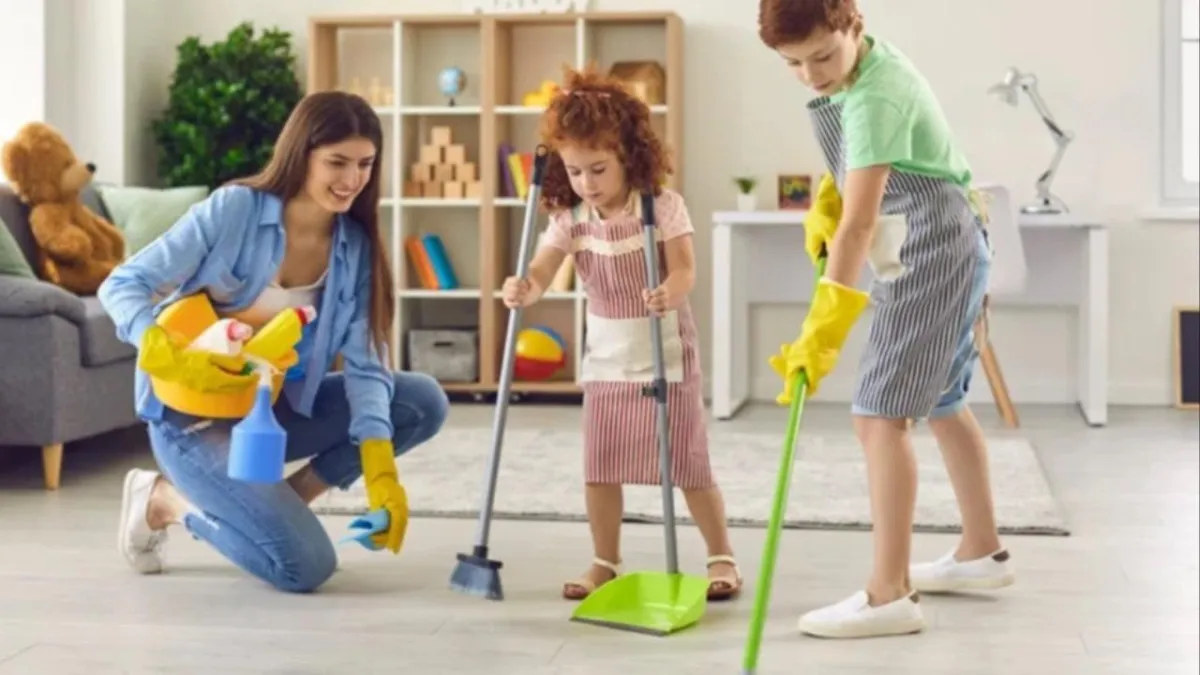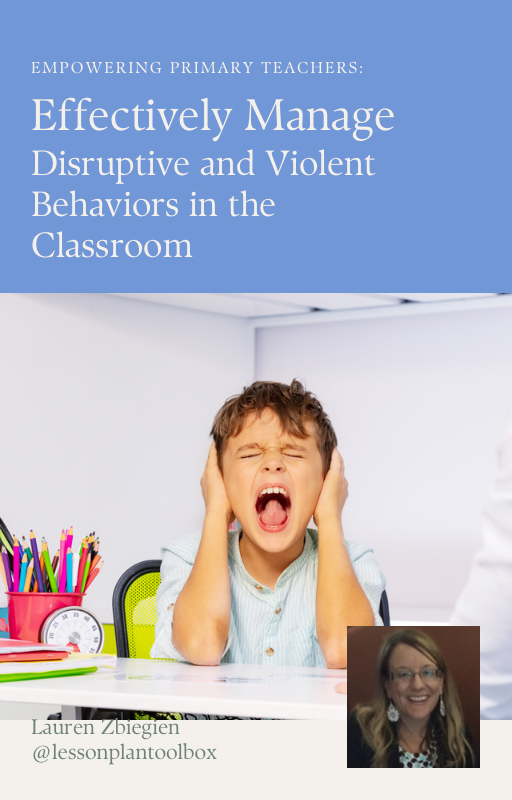
Mastering Classroom Management: Responsibility and Independence

Use this link to watch the YOUTUBE version of this post.
Welcome to our summer series on Classroom Management by Design for Primary Teachers. Each week we will give you a new piece to the classroom management puzzle to have in place when you head back to school this fall. Think of it as a Lego kit just waiting to be built.
Classroom Management by Design for Primary Teachers - Week 9:
Mastering Classroom Management: Promoting Responsibility and Independence in the Primary Classroom
As a primary teacher with 20 years of experience, I've learned that promoting responsibility and independence in students is a cornerstone of effective classroom management. Creating a classroom environment where students are empowered to take ownership of their actions not only fosters a positive learning atmosphere but also prepares students for future success. In this blog post, I will share strategies for assigning classroom jobs, encouraging self-regulation, and developing a student responsibility chart. These techniques will help you cultivate a sense of responsibility and independence among your students, ensuring a well-managed and harmonious classroom.

Phase 1: Assigning Classroom Jobs
The Importance of Classroom Jobs
Assigning classroom jobs is an effective way to give students a sense of ownership and responsibility. Classroom jobs teach students valuable skills such as teamwork, accountability, and time management. They also help create a collaborative and supportive classroom community.
Strategies for Assigning Jobs
Identify Appropriate Jobs
- Daily Tasks: Identify tasks that need to be done daily, such as taking attendance, distributing materials, or tidying up the classroom.
- Weekly Rotations: Consider rotating jobs on a weekly basis to give all students the opportunity to participate and learn different skills.
Match Jobs to Student Abilities
- Skill-Based Assignments:** Assign jobs based on students’ abilities and strengths. For example, a student who is good at organizing might be responsible for managing classroom supplies.
-Inclusivity: Ensure that all students, regardless of their abilities, have the opportunity to participate and contribute.
Create a Job Chart
- Visual Representation: Display a job chart in the classroom where students can see their assigned tasks. Use visuals and colors to make it engaging and easy to understand.
- Student Input:Involve students in the creation of the job chart to increase their investment and enthusiasm.
Benefits of Classroom Jobs
- Responsibility: Students learn to take responsibility for their assigned tasks and understand the importance of contributing to the classroom community.
- Independence: Regularly completing jobs helps students develop independence and self-confidence.
- Teamwork: Working together to complete tasks fosters a sense of teamwork and collaboration.

Phase 2: Encouraging Self-Regulation
The Role of Self-Regulation
Self-regulation is the ability to manage one’s emotions, behavior, and thoughts in different situations. Encouraging self-regulation in students is crucial for maintaining a well-managed classroom and promoting positive behavior.
Techniques for Encouraging Self-Regulation
Modeling Behavior
- Lead by Example: Demonstrate self-regulation through your own actions. Show students how to stay calm, focused, and positive in various situations.
- Verbalize Thought Processes: Share your thought processes with students to help them understand how to approach challenges and make decisions.
Teach Self-Regulation Skills
- Mindfulness Practices: Incorporate mindfulness practices such as deep breathing, meditation, or yoga into the daily routine. These activities help students develop self-awareness and control.
- Emotional Recognition: Teach students to recognize and label their emotions. Use emotion charts or journals to help them express and manage their feelings.
Create a Calm Down Area
- Designate a Space: Set up a calm down area in the classroom where students can go to self-regulate when they feel overwhelmed. Include calming tools such as stress balls, coloring books, and soft music.
- Teach Coping Strategies: Provide students with strategies for calming down, such as counting to ten, taking deep breaths, or visualizing a peaceful place.
Benefits of Self-Regulation
- Emotional Control: Students who can regulate their emotions are better equipped to handle challenges and conflicts.
- Focus and Attention: Self-regulated students can maintain focus and attention during lessons and activities.
- Positive Behavior: Encouraging self-regulation reduces instances of disruptive behavior and creates a more positive classroom environment.

Phase 3: Developing a Student Responsibility Chart
The Purpose of a Responsibility Chart
A student responsibility chart is a tool that helps students understand and track their responsibilities. It serves as a visual reminder of their tasks and encourages accountability.
Steps to Create a Responsibility Chart
Identify Responsibilities
- Classroom Jobs: List the various classroom jobs and responsibilities that need to be assigned.
- Personal Responsibilities: Include personal responsibilities such as completing homework, following classroom rules, and participating in activities.
Design the Chart
- Visual Appeal: Make the chart visually appealing with colors, images, and clear labels. Use a large chart that can be displayed prominently in the classroom.
- Student Photos: Consider adding student photos next to their assigned tasks to personalize the chart.
Introduce the Chart to Students
- Explain the Purpose: Discuss the purpose of the responsibility chart with students and explain how it will be used.
- Assign Responsibilities: Assign responsibilities based on student strengths and interests. Ensure that every student has a role.
Review and Update Regularly
- Weekly Check-Ins: Review the chart with students regularly to ensure that responsibilities are being fulfilled. Make adjustments as needed.
- Student Feedback: Encourage students to provide feedback on the chart and suggest any changes or improvements.
Benefits of a Responsibility Chart
- Accountability: Students become more accountable for their actions and tasks.
- Organizational Skills: Using a responsibility chart helps students develop organizational skills.
- Positive Reinforcement: Acknowledging completed responsibilities reinforces positive behavior and motivates students.

Phase 3: Practical Activities for Promoting Responsibility and Independence
Activity: Assigning Classroom Jobs
Job Fair
- Introduction: Hold a “job fair” where students can learn about the different classroom jobs available.
- Applications: Have students fill out job applications, stating which jobs they are interested in and why they would be good at them.
Job Training
- Training Sessions: Provide training sessions for each job to ensure students understand their responsibilities.
- Role-Playing: Use role-playing activities to practice the tasks involved in each job.
Activity: Encouraging Self-Regulation
Mindfulness Moments
- Daily Routine: Incorporate short mindfulness moments into the daily routine, such as a few minutes of deep breathing or guided meditation.
- Reflection Time: Set aside time each day for students to reflect on their feelings and behavior.
Emotion Check-Ins
- Morning Check-In: Start the day with an emotion check-in where students share how they are feeling.
- Emotion Chart: Use an emotion chart where students can place a marker next to the emotion they are experiencing.

Activity: Developing a Student Responsibility Chart
Chart Creation
- Collaborative Design: Involve students in designing the responsibility chart. Discuss what responsibilities should be included and how the chart should look.
- Art Project: Turn the chart creation into an art project where students can decorate and personalize it.
Responsibility Review
- Weekly Review: Hold a weekly review session where students reflect on their responsibilities and discuss any challenges they face.
- Goal Setting: Encourage students to set goals for improving their performance in their assigned responsibilities.

Conclusion
Promoting responsibility and independence in the primary classroom is essential for creating a positive and well-managed learning environment. By assigning classroom jobs, encouraging self-regulation, and developing a student responsibility chart, you can empower your students to take ownership of their actions and contribute to a collaborative classroom community. These strategies not only enhance classroom management but also prepare students for future success by developing their organizational, emotional, and interpersonal skills. Embrace these techniques and watch your classroom transform into a place of responsibility, independence, and mutual respect.
FREE 5-Day CLASSROOM MANAGEMENT SUCCESS Challenge...Register NOW!
So many teachers have been asking me about effective classroom management strategies.
I’ve seen so many make the mistake of wasting months of their time because they are trying to figure out a solid classroom management plan that works.
And that's just backwards! So if you want to set yourself up for classroom management SUCCESS easily, then register for this challenge TODAY:
Classroom Management Success Challenge - Register!
Each day you will be given 1 small task to set you up for classroom management SUCCESS!
You will have an outline of your vision and values, expectations, classroom roles, and classroom setup.
Giveaway GALORES...with the GRAND PRIZE being a ONE-YEAR Master Classroom Management Membership for ALL of the K-3 teachers in your building!
Register NOW!
DID YOU KNOW…
Did you know I organize a FREE Facebook Group for Mastering Classroom Management? We are gearing up for our summer sessions, so if you’re looking for a simple way to improve your classroom management join the already 200+ teachers that have signed up: Mastering Classroom Management Facebook Group
Your ebook GIFT: Empowering Primary Teachers: Effectively Manage Disruptive and Violent Behaviors in the Classroom.

FINALLY…
If you enjoyed the tips in this post, you might also enjoy this series of videos Classroom Management by Design for Primary Teachers:
Don’t forget to follow us over on Instagram!
Teach~Relax~Repeat
Lauren
Lesson Plan Toolbox, LLC

